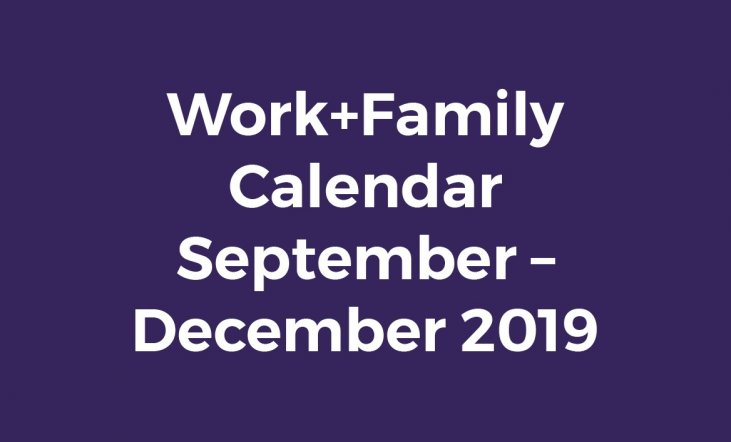Newsletter Sign Up
Regular work+family updates for
HR and diversity professionals.
My Family Care asks Suzy: Sometimes the message portrayed by the media can be confusing about what it means to be empowered. How can we empower both sexes at home and in the workplace without putting down the other half of the population?
Let's start from the beginning
To empower an individual, by definition, is to give power or authority, but it can also mean to equip, give confidence to, authorise and even to 'set free' an individual. If the aim is to empower both men and women in this way, at work and at home, it is important to look first at the gender roles which hold both sexes in their historical place. From there, we need to build a systematic approach to freeing both men and women to take on whichever role suits them best.
First of all, we need to agree if we actually think men and women are better suited for either role - which prompts two fundamental questions:
- Are childbearing, childrearing and home-making, roles that women are better suited to?
- Is providing an income, building a career or leading a business, a role better suited to men?
With the exception of childbearing - which can only physically be done by a woman - very few people in my experience would answer anything but 'no' to both questions. If this is the case, is there anything more than historical context which encourages individuals to choose traditional roles, rather than the ones which best suit their lives, personal ambitions and capabilities? And if we were to empower our employees to make that choice, what would empowering programmes look like?
Differing policies
Start first with an assessment of parenting programmes - maternity, paternity, and parental leave and support packages in the UK. These programmes set the tone as to whose role it is in society to look after the home and children. With the exception of a few progressive organisations who have wholeheartedly adopted shared parental leave, most organisations will have a vastly different policy and supporting programmes which provide balanced offerings to their working fathers and mothers.
Living up to the stereotypes
The unwritten and unintentional message behind these policies is that dad's should take a short period of time off when a child is born, and the role of raising children should predominantly be left to women. Whilst societal views are slowly changing, men who take the dominant role of childrearing are often considered 'less than' their fee-earning counterparts. And, if you move beyond paternity leave to flexible working, the data is often even more stark. Whilst formal flexible working arrangements are available by law to men and women equally across the UK, only a handful of men participate with formal changes to schedules.
Meanwhile, the women who do participate are almost always working mothers trying to be successful at both work and parenting. If an organisation wants to truly progress, they need to ask why their men, with the exception of an occasional ad hoc day, don't choose to adopt schedule changes to support childcare, school drop-offs and pick-ups?
Who needs to adapt?
Similarly, thousands of organisations provide 'support' to women to help them adapt to the business environment and enjoy a successful career, in the form of coaching, mentoring, training and other programmes to develop highly performing women. Whilst there is great value in much of what is delivered through these programmes, the subliminal message is that women need to change to succeed in business - not the other way around.
What if you flipped the time and energy spent on adapting women, to adapting the organisation to embrace women as they come - using their natural skillsets to broaden the capability of your organisation? What message would that send to your employees, and the thousands of potential applicants in the market?
So where do we go from here?
Organisations which want to empower women and men alike should start first with an assessment of the time, energy and money they spend on gender specific programmes. Are they doing enough - both in the visible messages and role models, and in the invisible messages delivered through organisational norms, policies and programmes - to allow both sexes real choice? Or, are the policies and offerings, by their very historical nature, holding back progress and dis-empowering employees?
Suzy Levy, Managing Director of The Red Plate












